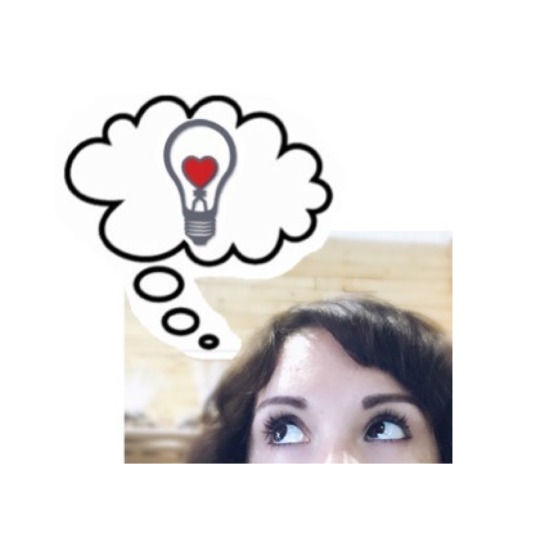
As a singer and a yogi, I think a lot about posture and positioning. I often consider how to support the body to be more effective and efficient through the means of awareness and alignment. And whether you’ve studied voice or not, you’ve probably been hipped to the phrase “proper singing posture”. But what exactly IS that? And how often do we have the availability to execute it in performance? With the addition of movement, instruments, and other factors/restrictions, most performance doesn’t naturally lend itself to good posture. So, how can we retain the fundamentals of it and still be free to “do our thang”? The key is to create a healthy default in practice that can follow you into performance when environment and positioning are not exactly ideal.
“THE PROPER POSTURE”
One of the biggest challenges of singing is our natural emphasis and investigation of the throat area. Because this is home base for the vocal cords, our attention naturally centers there. However, in doing this, we create an excess of unnecessary analysis and tension that restricts our voices. By bringing awareness and emphasis to other areas of the physical body, we balance out the tension to relaxation ratio.
• Begin in a standing position with the feet hips’ width apart, parallel, and facing forward. Feel the grounded nature of your feet, as if they have roots attaching you to the ground beneath you.
• Keep a slight bend in your knees and trace your attention up the length of the body.
• Let your belly be soft, but engaged, chest open, arms hanging down at sides, shoulders down away from the ears and slightly back.
• Allow your head to sit comfortably atop your neck with support, but without a lot of hubbub. Let your chin be parallel to the floor, eyes on the horizon.
• Imagine an invisible puppet string coming out of the crown of your head. Envision someone gently pulling the string and easing your spine upward. Once you find that lift, immediately come back to the rooting of the feet and feel the dichotomy of being grounded and elevated simultaneously.
• Keeping that alignment, bring one hand to the mid-to-lower abdomen. WITHOUT PUSHING OR FORCING, on an INHALE, allow the belly to expand and fill your hand (Like a buddha belly). Hold for one count. As you EXHALE (again WITHOUT FORCING!), allow the belly to release back toward your spine (Like a prep for a sit up). Hold for another count. Repeat for several rounds. This can take some time and consistency to understand, so keep practicing!
• Try to keep the weight balanced, but if necessary lean slightly forward.
• Begin with a simple “MMMMMMMM” out the mouth without pitch.
• Add pitch to the MMMMM
• Begin to slide the pitches of your MMMM up and down a comfortable scale. The whole time repeating the alignment steps. Once we incorporate vocals, things start to shift, so keep coming back to the consciousness and components of your set-up.
“THE RESONANT RAG DOLL”
One of the biggest follies for keeping posture/alignment in check during performance is the fact that many of us sing while simultaneously playing an instrument. This is a great exercise for people with a lot of neck/shoulder tension or asymmetry in their upper bodies (like myself). This is also a good one to further your breath control, as you are dealing with a more constricted abdominal configuration. Can you keep the above breathing principals intact while dealing with less accessibility?
• Begin in an upright seated position using a supportive, comfortable chair (ideally with no arms) Find your “proper posture” alignment here in the seated position.
• Open your legs to a wide “V” position with the knees over the ankles at 90 degrees
• With a swift (yet gentle) release, allow your torso, arms, and head to fall between your open legs. In the forward bend, glide your head from left to right, then front to back. Come back to upright position slowly, stacking the vertebrae one at a time.
• Do it once or twice more to understand the movement. Feel the release of the muscles around your neck, and shoulders. Feel the support of your abdominal muscles WITHOUT squeezing them. Imagine a rag doll collapsing.
• On the next round, Inhale through the nose, then accompany the movement with a long sigh out the mouth, “AAAAHHHHHHH”
• On the next round, add pitch to the sigh on any comfortable note. Hold the pitch for the full length of your breath when you are in the folded position.
• On the final round, play with volume and pitches or even add a melody once you are in the full folded position.
“THE SLEEPY SERENADE”
Lying down while vocalizing can seem counter-intuitive, but it actually provides many benefits. When we are in a reclined position, it encourages the nervous system to calm itself, which promotes focus and helps to soothe jitters. Because we are utilizing a piece of furniture to support our head, neck, and shoulders, they too can relax and alleviate tension around the muscles of the vocal cords.
• Using a reclining chair, a chair or bed (with pillows slightly propping up your head), find your “proper posture” components but apply them to lying down. Feel energy radiating outward from your feet and the crown of your head, stretching in opposite directions.
• Place your hands on your belly and feel the rise on the inhale and release on the exhale.
• Inhale through the nose and blow out softly through the mouth as if you’re keeping an invisible feather in the air above your face. Repeat several times.
• Inhale through the nose, and without pitch, speak out the words “HUM YUM YUM YUM YUM…” for the full length of the exhale. Repeat several times.
• Repeat exercise adding pitches but keeping the vocalization soft energetically. Let it be restorative and relaxing.
“THE CARDIO CROON”
Think about the last time you saw a big Broadway musical or a high octane rock show. These artist are doing a full cardio workout as they vocalize. There is dancing, running, headbanging, gesticulating, you name it. Vocalists with proper training are able to do all this extraneous movement and still uphold their alignment and execute their singing with precision and non-injury. “Cardio crooning” is a great way to build up this skill in your own practice. Try to sing, (staying mindful of your alignment) the next time you are running, jump-roping, trampolining, racing to the train, or other preferred methods of heart-racing!
“THE MISDIRECTED MELODY”
It’s true what they say, “Opposites attract.”
• Try utilizing this in your vocal practice. Use downward motions, movements, and postures when singing ascending lines or high pitches.
• Use upward movements when vocalizing descending lines or low pitches.
• Check out my article “QUESTION YOUR DIRECTION” where I explore this concept in further detail.











